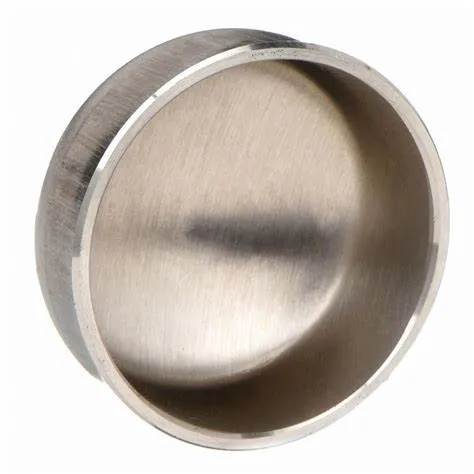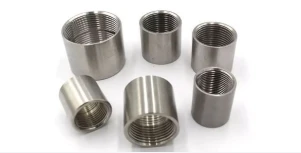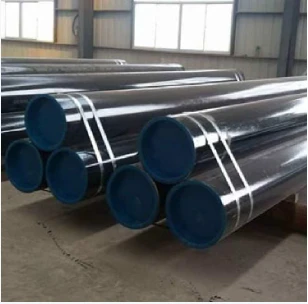JIS B2311 ir japāņu industriālais standarts, kas attiecas uz sadurmetināšanas cauruļu veidgabaliem, tostarp cauruļvadu sistēmās izmantotajiem vāciņiem. Sadurmetināšanas vāciņi kalpo, lai aizvērtu caurules galu, nodrošinot blīvējumu, lai novērstu noplūdi vai piesārņojumu. Šeit ir ievads JIS B2311 sadurmetināšanas vāciņiem:
- 1. JIS B2311 Standard:
- - JIS B2311 standarts nosaka prasības cauruļvadu sistēmu sadurmetināšanas veidgabalu, tostarp vāciņu, konstrukcijai, izmēriem, materiāliem, ražošanai un testēšanai.
- - Standarts nodrošina, ka vāciņi, kas ražoti saskaņā ar JIS standartiem, atbilst kvalitātes standartiem un ir saderīgi ar citiem cauruļvadu komponentiem.
- 2. Sadurmetināšanas vāciņš:
- - Sadurmetināšanas vāciņš saskaņā ar JIS B2311 ir armatūra, kas paredzēta, lai droši nosegtu un noslēgtu caurules galu, nodrošinot aizsardzību un saglabājot cauruļvadu sistēmas integritāti.
- - Cepures tiek izmantotas situācijās, kad caurules galu ir nepieciešams pastāvīgi vai īslaicīgi aizvērt, lai novērstu noplūdi, piesārņojumu vai nodrošinātu sistēmas apdari.
- 3. Materiāls un konstrukcija:
- - Sadurmetināšanas vāciņi saskaņā ar JIS B2311 specifikācijām ir pieejami no dažādiem materiāliem, piemēram, oglekļa tērauda, nerūsējošā tērauda un leģētā tērauda, lai tie atbilstu dažādām pielietojuma prasībām.
- - Šie vāciņi ir izgatavoti, izmantojot standartizētas konstrukcijas metodes, lai nodrošinātu stingru un bez noplūdes savienojumu, kad tie tiek piemetināti pie caurules gala.
- 4. Pielietojums un priekšrocības:
- - Sadurmetināšanas vāciņus var izmantot dažādās nozarēs, tostarp naftas un gāzes, ķīmiskajos procesos, ūdens attīrīšanas iekārtās un citās nozarēs, kur cauruļu galiem ir nepieciešams droši nosegt.
- - Cepures nodrošina cauruļu galu aizsardzību no vides elementiem, novērš piesārņojumu un palīdz uzturēt cauruļvadu sistēmas tīrību un integritāti.
- 5. Uzstādīšana un metināšana:
- - Uzstādot sadurmetināšanas vāciņus, lai nodrošinātu ciešu un necaurlaidīgu blīvējumu, būtiska ir pareiza uzstādīšanas prakse, tostarp pareiza izlīdzināšana, caurules gala sagatavošana un metināšanas metodes.
- - Metināšana ir izplatīta metode vāciņu pievienošanai caurulēm, nodrošinot drošu un pastāvīgu slēgšanu, kas var izturēt spiedienu, temperatūras svārstības un šķidruma plūsmu sistēmā.
- Rezumējot, JIS B2311 sadurmetināšanas vāciņi ir būtiski komponenti, ko izmanto cauruļvadu sistēmās, lai droši noslēgtu un aizsargātu cauruļu galus. Šie vāciņi atbilst standartizētām prasībām, lai nodrošinātu kvalitāti, uzticamību un savietojamību rūpnieciskos lietojumos, kur nepieciešama cauruļu slēgšana un aizsardzība.
What Is a Butt Welding Cap and How Is It Used in Industrial Piping?
In industrial piping systems, end-of-line sealing and branch closures require robust solutions. A butt welding cap serves as a critical component for terminating pipes securely. By providing a seamless, welded closure, this fitting maintains system integrity, prevents leaks, and supports compliance with industry standards.
What Is a Butt Welding Cap?
A butt welding cap—also called a pipe end cap or buttweld end cap—is a round fitting designed to close off the end of a pipe. It’s manufactured to match the pipe’s outer diameter and schedule, with either a hemispherical or flat face. To install, both the pipe end and cap are beveled to form a V‑groove, enabling full‑penetration, fusion welds. Common materials include carbon steel, stainless steel, nickel alloys, and other engineered grades, chosen to satisfy pressure, temperature, and corrosion‑resistance requirements.
How Is Butt Welding Cap Used in Industrial Piping?
Butt welding caps find application across oil & gas, petrochemical, power generation, water treatment, and general process industries for both permanent and temporary closures. During hydrostatic testing, technicians install caps to seal off sections of piping while monitoring for leaks. In new construction or retrofit projects, caps terminate branch lines, future tie‑in spools, or dead‑end mains until system expansion. Welders prepare each joint by cleaning and beveling surfaces, aligning the cap precisely, and executing a root pass followed by filler passes per the qualified Welding Procedure Specification (WPS). Post‑weld heat treatment and non‑destructive examination (NDE)—such as radiography or ultrasonic testing—verify weld integrity and compliance with ASME B16.9 and related standards. Additionally, temporary caps enable safe isolation during maintenance, allowing for segment testing and dewatering under regulatory protocols.
Benefits and Best Practices
Butt welding caps offer a smooth‑bore transition that minimizes flow disruption and stress concentration. Their full‑penetration welds deliver exceptional structural strength and leak resistance. To optimize performance, engineers should:
Select caps with matching material grades and wall thicknesses
Adhere to proper bevel angles and joint fit‑up tolerances
Follow qualified WPS protocols rigorously
Consider cladding or protective coatings in corrosive environments to extend service life
Regular inspection and thorough documentation ensure long‑term reliability and safe operation under demanding conditions.
Butt welding caps are indispensable components for achieving durable, leak‑proof pipe terminations in a wide range of industrial applications.
Butt Welding Cap FAQs
What is a butt welding cap?
|
What materials are commonly used?
|
What standards govern butt welding caps?
|
How are butt welding caps installed?
|
Where are butt welding caps typically used?
|
What are the advantages of threaded caps?
|
















